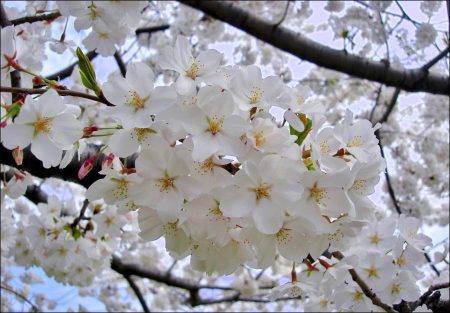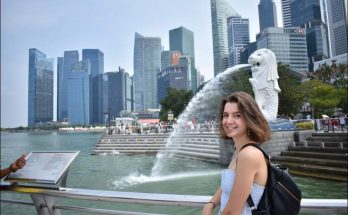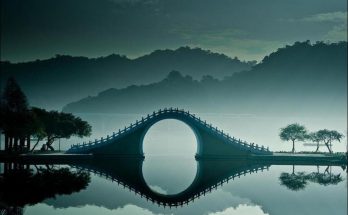Yoshino and Kumano, a little apart from each other, the one mountainous and the other coastal, were always treated as two entireties. They have now been welded into one park, covering an area of 168,560 acres. Both are no less celebrated in history and legendary traditions than for their beauty, their temples and shrines — perennial Meccas for devotional and holiday-making pilgrims. Astride the three prefectures of Nara, Wakayama and Mie in central Japan, on the Pacific coast, they are veritable centers for picnics, excursions and holidays in the Kwansai district, as Nikkō and Hakone are to the Kwantō people.
Every Japanese knows Yoshino as the home of cherry blossoms, for most of the cherry trees blossoming in spring throughout Japan bearing the name “Yoshino-zakura,” were originally transplanted from Yoshino. Little wonder if Kwansai folk should tell you never to talk about Japan’s cherry blossoms till you have seen Yoshino. It was amid the cherry-clad hills of Yoshino that the ill-fated Emperor Godaigo (1318-1339) held his court for three years. Yoshino was the august abode of the Emperors of the Southern Court for half a century, and is naturally associated with many romances, heroic and tragic, which have been an undying source of inspiration to poets, writers and artists.
Yoshino’s cherry blossoms make a splendid contrast with those of most other places in that they grow on the side of mountains. As you go up the winding hillpaths, the blossoms present sights of surpassing beauty, growing as they do, among the green trees and rocky mountain scenery. The most famous spot is “Hitome-senbon” (” A Thousand Trees at a Glance”), and further up the mountain there are “Naka-no-senbon” (” A Thousand Trees in the Middle”), regions adorned with cherry trees so numerous as to give rise to the conventional names.
Yoshino, however, is in reality a collective name for the three ranges of mountains, namely, Sanjogatake or Omine (5,620 ft.), Shaka (5,904 ft.), and Bukky (6,281 ft.), each consisting of several peaks sometimes called the “Yamato Alps.” The firstmentioned, O + ̦mine, is the sacred mountain, claiming the somewhat out-of-date distinction of being the only mountain in Japan to forbid women to enter its precincts. Omine means “great peak,” suggesting its serrated ridges.
It makes a striking contrast with Mount Odaigahara, to the east of Ōmine, whose summit is a tableland of 6 square miles, affording a wonderfully extensive view, including, on a clear day, even Mount Fuji, 180 miles to the east. And these mountains are climbed by the more arduous of excursionists not only in cherry-time but in all other seasons. The great majority are content to go as high up as the blossoms tempt them. The best way to reach Yoshino is to go by the Osaka Electric Railway, which runs several special services during the cherry season in early April.
Visits: 79



